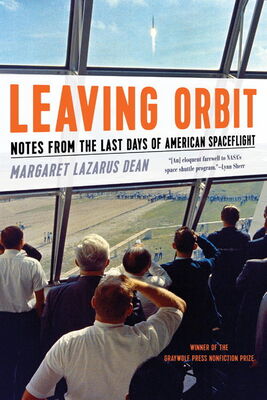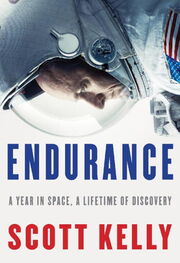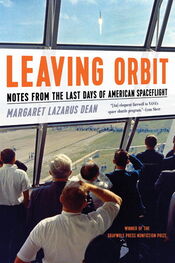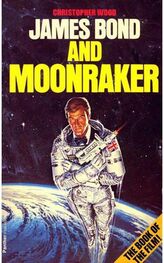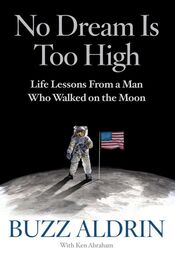Maybe you’ve seen it. Many people have—at least 800,000 have clicked on various YouTube iterations of the same moment. It looks like nothing at first. The video is fuzzy, amateur, handheld. We hear the muffled verityé sound of wind against the microphone, of the excited breath of the camera operator. People are standing around, their postures reflecting boredom, their faces and movements obscured by the shaky camera work and low resolution.
On YouTube, of course, this poor video quality, combined with a high hit count, contains an inverse promise: something is about to happen.
We can make out a white-haired man in a blue blazer, partially obscured by a sign. He seems to be talking to another man, in a black jacket, whose back is to the camera. Out of any context, the white-haired man would be unrecognizable because of the bad video quality, but if you know to look for him—and you do, because of the title on the YouTube page—the man is recognizable as astronaut Buzz Aldrin, lunar module pilot of Apollo 11, one of the first two men to walk on the moon.
The muffled audio obscures the voice of the black-jacketed man, who is speaking now. Passion or nervousness makes his voice waver.
“You’re the one who said you walked on the moon when you didn’t,” the man says. He is holding an object out to Buzz. A subsequent Google search reveals that it’s a Bible—he is trying to make Buzz swear upon it.
Overlapping him, Buzz Aldrin’s voice says, clearly and unwaveringly, “Get away from me.”
“—calling the kettle black. You’re a coward and a liar and a thief—”
At that moment Buzz’s arm comes up and cracks the black-jacketed man in the jaw. Even with the poor video, we can see that it’s an impressive punch, well-aimed and powerful. We can’t see the punched man’s face, but we see his head recoil backward. The camera recoils too, as if in sympathy. Something has changed in the scene, you can sense it. One public figure’s image has been complicated, another person now has a story to tell, a video to put on YouTube.
“Did you get that on camera?” the man in the black jacket asks breathlessly, a note of joy in his voice. The black-jacketed man is Bart Sibrel, moon hoax conspiracist. He believes that all of the trips to the moon were faked, were in fact physically impossible, and that the Apollo astronauts have agreed to uphold the lie because they benefit personally and financially. (He has also stated at other times that the astronauts are not consciously lying but were subjected to mind control by the government to convince them that they did in fact go to the moon. Today, clearly, he is working from the former theory.) He has made it his life’s work to expose the conspiracy.
“Did you get that on camera?” This line of dialogue, spoken so clearly and happily, subsequently helps to acquit Buzz Aldrin, seventy-two years old at the time of the incident, of assault charges.
Everyone agrees that NASA’s finest hour was the journey of Apollo 11, which left Earth with Buzz Aldrin, Neil Armstrong, and Michael Collins aboard on July 16, 1969. During the three days it took them to get to the moon, the astronauts grew beards, took measurements of the stars out their windows using sextants to make sure they were still on course, chatted with Houston, listened to music on tape, shot films of each other doing somersaults and making ham sandwiches in microgravity, got mildly on one another’s nerves, and refrained from considering the enormity of their undertaking. Each of them has said in the years since that they actively kept themselves from thinking about the long chain of risky events it would take to get them back home. This particular avoidance was an ability they had honed as test pilots of experimental aircraft. It seems desirable for astronauts to be able to resist grand and potentially panic-inducing trains of thought, yet all three of them have expressed regret that this same character trait kept them from being able to adequately convey to us spectators what it was like to experience the things they experienced.
It’s difficult for those of us born in a later era to imagine the historical phenomenon of Apollo, a moment when Americans came together over an enormous science project funded entirely by the federal government. We must take our elders at their word when they talk about what this was like, as we’ve never seen such a thing ourselves. Some years, during the run-up to Apollo, Congress voted to allocate NASA a larger budget than NASA had requested. The effects of this kind of public support were unprecedented outside of war, and may never be seen again. As important as this financial support was for the early days of Apollo, it also created a tragically inaccurate impression within NASA that its projects would continue to be funded at this rate. In the midsixties, everyone thought the construction of the Kennedy Space Center was taking place at the start of an exciting new era. No one could have known that in fact 1966 was to represent the zenith of that unanimity. The public’s imagination for fulfilling President Kennedy’s challenge would prove more shortsighted than anyone at NASA had hoped.
Space historians divide the fifty-year period of American spaceflight into two eras: the “heroic era,” which includes the Mercury project to put the first Americans into space, the Gemini project to expand NASA’s abilities and test techniques for getting to the moon, and the Apollo project, which achieved the moon landings. The second era of American spaceflight is known as the “shuttle era,” and its being named for a vehicle rather than a lofty attribute says a lot about the difference between the two, about the loss of grandiosity in the goals we set ourselves, about the ways in which NASA had been forced to repackage spaceflight as an economical and utilitarian project. The heroic era spanned only eleven years (1961–72) compared to the shuttle’s thirty, with a much longer list of firsts, and this fact contains an important lesson about the history of American spaceflight as well. We did a lot in a very short span of time, and then we did a lot less for a lot longer. Soon, of course, we’ll be doing nothing at all. Faced with the fact that we are losing American spaceflight altogether, suddenly the workhorse shuttle seems as beautiful and daring as the Saturn V did in the sixties.
This is the paradox of growing up in the shuttle era: the vehicle is more complex and advanced, its reusability makes it much more cost-effective, and its versatility makes possible missions the Saturn V never could have accomplished, such as repairs to the Hubble Space Telescope and construction of the International Space Station. Yet the sense of danger, the sense of achieving the impossible, was what made the heroic era feel heroic. If we could somehow get that back, many people feel, we could restore NASA to what it once was. The sense of collective adventure from the heroic era has never left us. At the same time, it’s the shuttle’s disasters that brought about its end. We want the danger, but without any actual risk.
Here is one way to conceptualize NASA’s heroic era: in 1961, Kennedy gave his “moon speech” to Congress, charging them to put an American on the moon “before the decade is out.” In the eight years that unspooled between Kennedy’s speech and Neil Armstrong’s historic first bootprint, NASA, a newborn government agency, established sites and campuses in Texas, Florida, Alabama, California, Ohio, Maryland, Mississippi, Virginia, and the District of Columbia; awarded multi-million-dollar contracts and hired four hundred thousand workers; built a fully functioning moon port in a formerly uninhabited swamp; designed and constructed a moonfaring rocket, spacecraft, lunar lander, and space suits; sent astronauts repeatedly into orbit, where they ventured out of their spacecraft on umbilical tethers and practiced rendezvous techniques; sent astronauts to orbit the moon, where they mapped out the best landing sites; all culminating in the final, triumphant moment when they sent Neil Armstrong and Buzz Aldrin to step out of their lunar module and bounce about on the moon, perfectly safe within their space suits.
Читать дальше